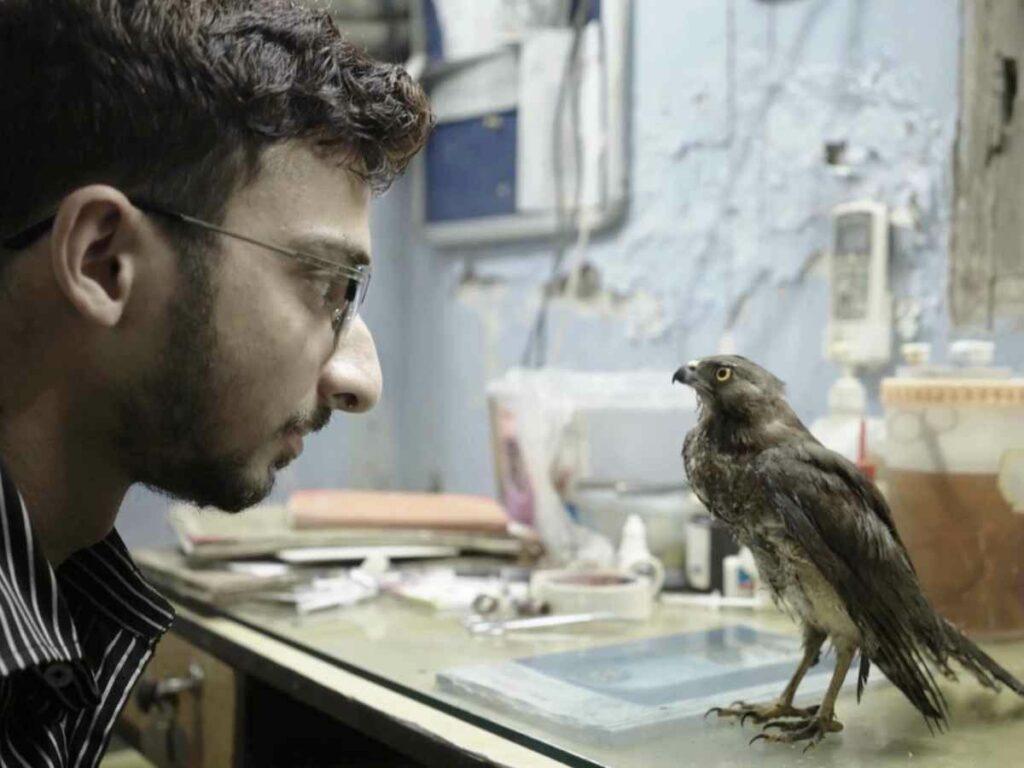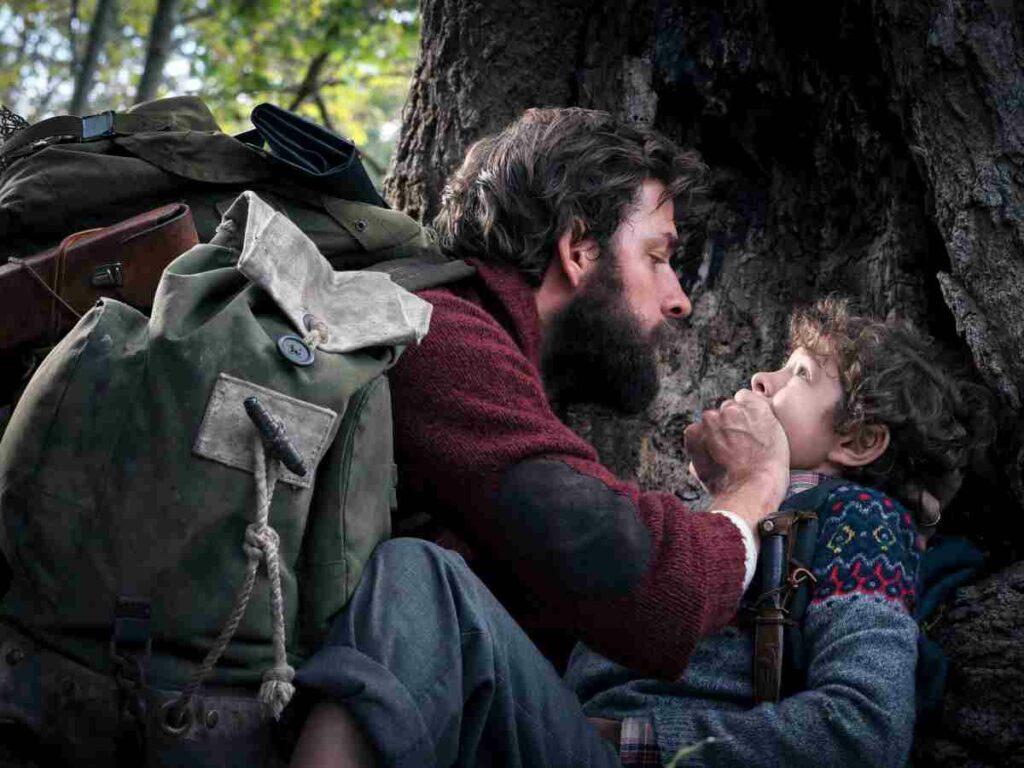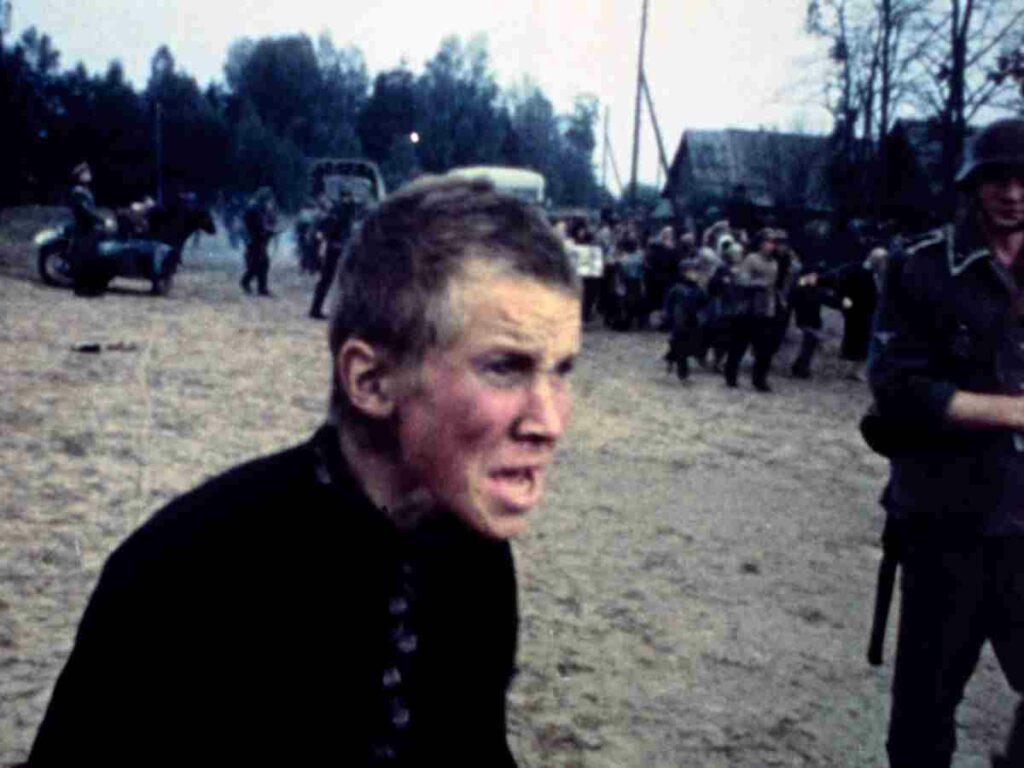Make no mistakes, All That Breathes is a love letter.
Saud and Nadeem, brothers accompanied by Salik, (a character so characteristic, it’s a delight to watch him on screen), attempt to save a species of bird, which not many seem to care about.
All That Breathes is less about the black kites than it is about what the title implies, the interplay of the various life forms that, often unseen, are coexisting in the city with the glaringly obvious life form, the humans.
Delicious long-pans, Ben Bernhard & Riju Das have cracked the Goldilocks zone when it comes to the span of a shot.
It’s long enough that it stays with you, just seconds more than you are used to seeing a cut. The score imbues in it the feeling called sthir, (most closely translated to meditative stability) and I almost counted the duration of the scene in breaths. Ten breaths, twelve sometimes. Enough for you to dwell on the interplay between the overbearing evidence of the human presence littered in the landscape, the ever-increasing garbage piles, the traffic, and the almost miraculous display of life: a little turtle crossing the entire mayhem to stick its little head out.
The pan is slow, but not achingly so, almost attuning itself to what is being shot, a strange sort of impersonification by the camera of the ‘subject’. It seems that the filmmakers, along with Saud and Nadeem are incorporating the tenet of their ammi (mother),
‘You do not distinguish between all that breathes. zindagi khud ek tarah ki rishtedari hai, hum sab hawa ki biradiri hain’
(Life itself is a kinship. We’re all a community of air.)
Among the many scenes, one of my favorites starts with the spider spinning its web as the camera shifts focus and moves on to the tree the web was being spun on, further leading on to the watchman sitting with two dogs while swatting the mosquitoes away with the electric bat that we all know too well. Only, it doesn’t stop with him, it glides further, on to the lizards resting on the wall while the sound of the mosquitoes dying out by the electric bat continues to follow you.
The temperature keeps soaring, AQI is reaching unprecedented numbers and kites are falling from the sky, ‘dropping like flies’. Accompanying the pollution and the heat, tension too, is rising like a crescendo as we hear political rallies shouting about one thing to the next, while the citizens are almost anesthetized by this sheer chaos.
Saud talks about how the kites have evolved to adapt to the maddening hostility of the city, and it seems like the brothers’ impassivity is a kind of resilience as well, a kind of evolutionary response to adapt to the changes that are too fast, too big for mere individuals.
Water comes into the house, and people use bricks as stepping stones. Birds stand proud, both in a waterlogged basement and in the toxic effluent-induced foam of the yamuna, and the azaan , almost like a metronome in this pandemonium, still comes when it is timed to.
Only when it doesn’t. And then you have the only shot in the film that doesn’t adhere to the aspect ratio, the video we’re all branded by, of the man vandalizing a mosque in one of the worst riots India has seen, accompanied with the ringing sound reminiscent of all that we want to move on from but shouldn’t.
The azaan, Saud and Nadeem’s stoic dedication to the raptors, and Salik’s awe for the birds, seem like the only stability allowed in this mayhem.
There are fault lines in this stoicism though. The seemingly unbreakable, wry resolve cracks when Saud tells that the conflict between him and Nadeem is a mere symptom. A tiny symptom of the violation of the sky, of the abuse being inflicted on the air and the creatures of it.
Or when he is astounded just by the sheer number of boxes that don’t seem to stop coming in one afternoon when the apparent ‘season’ for injured kites hasn’t even begun.
For all the wry, matter-of-factly pragmatism that Shaunak Sen admires about the brothers, and almost wants to emulate, the passivity and rigor that seems devoid of sentimentality even at the cost of their safety when the riots strike, Sen, despite his best efforts has ended up penning a love letter.
An ode to the resilience of the crumbling ecosystem that just refuses to crumble, it continues to adapt and evolve even more ingeniously.
The brothers would like to remind us how the constant inventiveness of birds is a sign that they will survive past it, the kites following the disappearance of vultures, or them using cigarette buts as pest repellents, is a testament to nature always finding a way.
But how far can you push something without inflicting and ingraining pain in the adaptation itself? And what is the price that is paid for it?
And who ends up paying that price?
All That Breathes, asks these questions in a somber, muted manner. It does not pretend to give any answers. There are no proclamations, no grand statements on the to-dos and not-tos.
The scene of paper kites flying in the sky (which is often the cause of most of the bird injuries) is allowed the same impartial gaze, it’s as visually arresting as the rest of the film. The camera doesn’t differentiate, it’s left for you to wonder if these kites have now mostly succeeded to replace the bird it derives its name from.
When the brothers celebrate their grant with Cornettos, the camera, along with them, impartially looks at the emaciated man washing the dirt off his shirt in a puddle from the dripping roof.
The answers, if there are any, are left blank.
Like Sen’s earlier work, Cities of Sleep, this too is a very loving portrait of the city of Delhi. Not ‘love’ loving, but more in a way of witnessing with an intimacy that only a lover can. Here is a film that has mastered the art of capturing the city. Not once do we see the tell-tale Delhi imagery that one is fed with, the only obvious reference is the DL vehicular number plates, but one recognizes Delhi from the absolute mad dystopia that exists in it.
It’s knowing the nerve and managing to show that nerve of the city. Witnessing is one of the purest acts of love. Niladri Shekhar Roy’s sound design accompanies brilliantly. The sound of the blaring horns, an old song filtering from the radio in the basement, or the music coming from a passing car as fleas buzz and rats continue to gnaw and fill the soundscape and until that’s all you can hear, the cacophony of the city transforms into some sort of azaan of its own.
Sen realizes, and showcases, that the brother’s seemingly dry un-sentimentality exudes sublime poetry. They look at the city as a gaping wound, or sometimes a big stomach. And themselves, a tiny band-aid on the festering wound while their muse, the kites, sust-sa-til aasman me, the gut-clearing biome of the stomach.
The film, like the brothers, flirts with metaphors. We know, all too well, of the human counterpart of the ‘non-veg bird’ that was denied help from the bird hospital.
I do have one complaint, the only one truly, is that I don’t think the English subtitles translate what is being said mostly. It misses some important nuances and adds things that weren’t implied.
At one point one brother on a frozen video call to the other says,
‘sun paa raha hai mujhe?’
Don’t the city, the sky, the birds, the many animals we’ve learned to un-see ask the same question of us, ‘Can you hear us?’
All That Breathes won L’Œil d’or, le prix du documentaire at Cannes 2022 after winning the Grand Jury Prize at Sundance and was nominated for Best Documentary at the Academy Awards 2023 among many other accolades.




